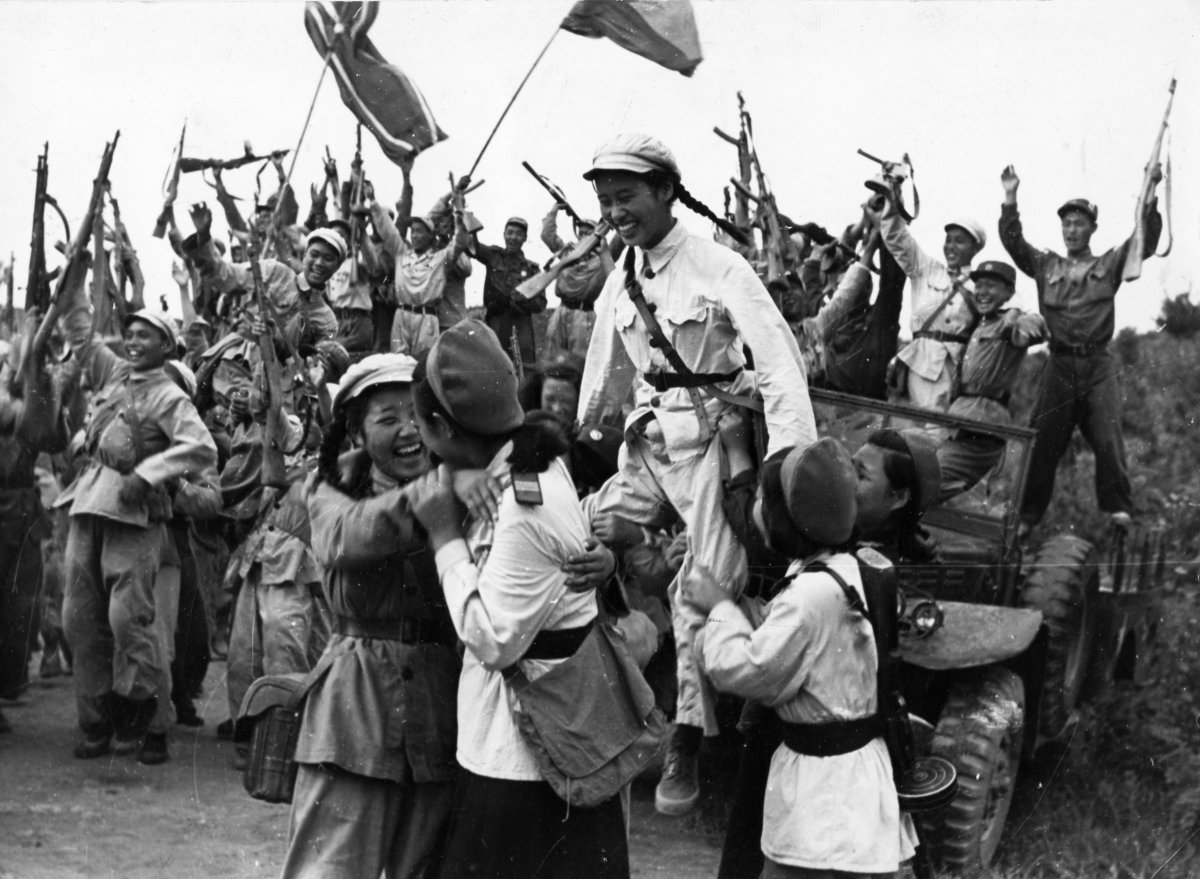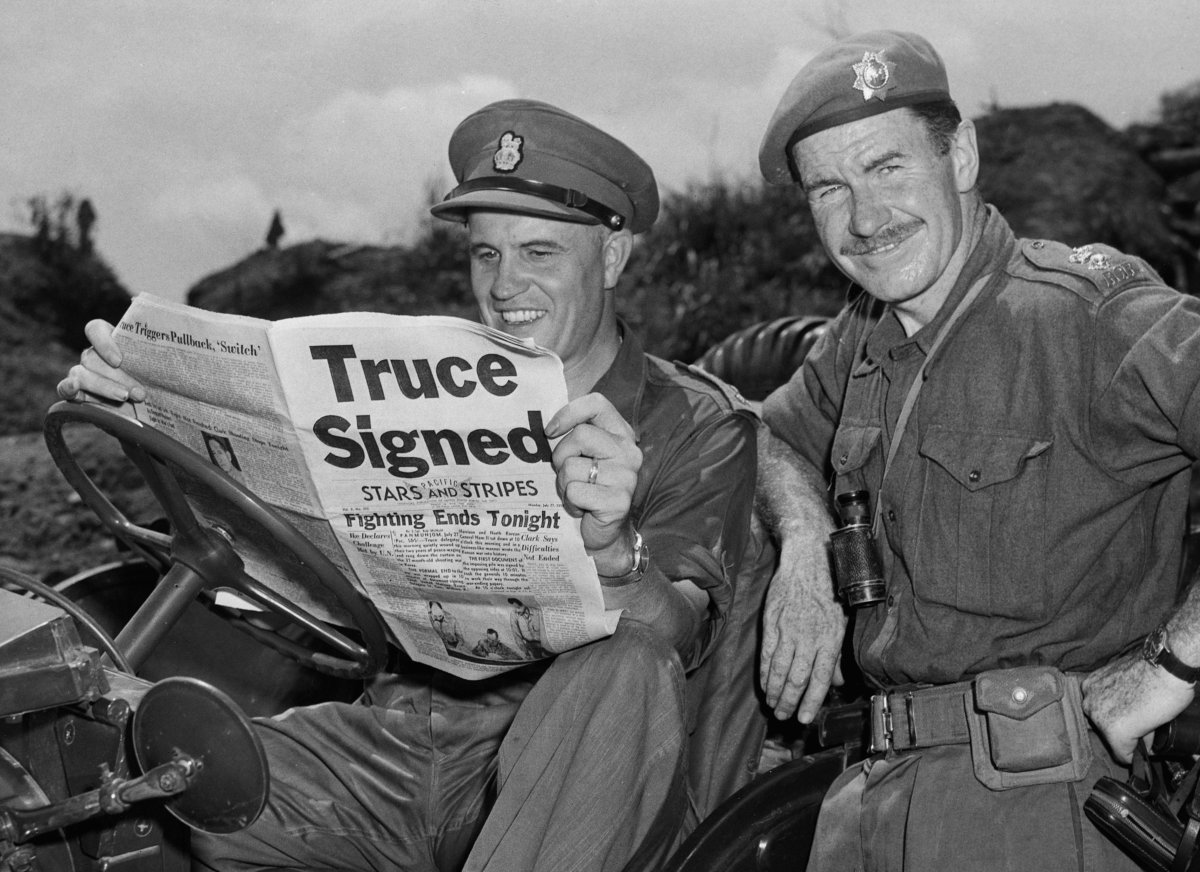North Korean leader Kim Jon Un and South Korean President Moon Jae In agreed to end the Korean War on Friday, a conflict that has been plaguing the peninsula for 65 years.

The leaders made the historic announcement Friday, pledging a “new era of peace” and vowing to get rid of all nuclear weapons on the Korean Peninsula.
It’s been a long, destructive history between the rival Koreas, who fought one of the 20th century’s bloodiest conflicts and occupy a divided peninsula that’s still technically in a state of war.
So how did the Koreas come to the point where a peace deal looks possible?
WATCH: Remembering Korean war veterans
Koreas divided
Korea was one country until it was divided along the 38th parallel in the wake of the Second World War. The Soviet Union had liberated the northern part of the Korean Peninsula after the defeat of Japan. American troops moved into the southern part of the peninsula.
How did the Korean War start?
By the late 1940s, the two new states had formed on the peninsula. South Korea — backed largely by the Americans — was led by anti-communist dictator Syngman Rhee. North Korea — backed largely by the Soviet Union — was run by communist dictator Kim Il Sung.
Neither side accepted the other as a legitimate government.
On June 25, 1950, the Korean War broke out after around 75,000 soldiers from the North Korean People’s Army poured across the 38th parallel, the boundary between the Democratic People’s Republic of Korea to the north and the Republic of Korea to the south.
The invasion, which came as a surprise to the West, also marked the first military action of the Cold War.
READ MORE: Mapping the dead of Canada’s forgotten war
Sixteen countries, including the United States and Canada, entered the war to help South Korea, with the stated goal to stop communism from spreading. China fought on the side of North Korea, and the Soviet Union sent them military equipment.
Ceasefire declared
Creation of Korean Demilitarized Zone
The ceasefire agreement created the Korean Demilitarized Zone to separate North and South Korea. It stretches 240 kilometres along the 38th parallel and is around four kilometres wide.Despite the ceasefire, occasional violence flared between the two nations over the years.The Soviet Union collapses
The Soviet bloc collapsed in 1991 and the two Koreas signed a nonaggression agreement that year. That was followed by a joint declaration in which both sides promised not to possess, produce, or use nuclear weapons.
However, a few years later, North Korea became gripped with famine and Kim Jong Il came into power. North and South relations then turned volatile.
2000 peace declaration
In 2000, South Korea’s then-president Kim Dae Jung visited Pyongyang for an unprecedented inter-Korean summit with Kim Jong Il.
The two leaders adopted a joint peace declaration after the three-day meeting, agreeing to promote independent unification and humanitarian and economic cooperation.
But the meeting failed to halt the North’s weapons programs or improve relations in a lasting way.
2007 peace meeting
Roh Moo Hyun, a liberal South Korean president who carried on with Kim Dae Jung’s engagement policy, crossed the border to the North to meet Kim Jong Il in 2007.
The meeting came amid brisk diplomacy among the members of six-party denuclearization talks — the United States, China, Japan, Russia and the two Koreas.
The two Korean leaders vowed to resolve the nuclear issues, end the Korean War and create a permanent peace regime. But the agreement made little headway after the North carried out a series of nuclear and missile tests, and after conservative presidents took office in the South, adopting a harder line on Pyongyang.
South Korean President Moon Jae In elected
In May 2017, liberal President Moon Jae In outlined a plan to expand economic and social exchanges between the two Koreas.
In his inauguration speech, Moon proposed talks with Kim, saying, “I am willing to go anywhere for the peace of the Korean Peninsula — if needed, I will fly immediately to Washington. I will go to Beijing and I will go to Tokyo. If the conditions shape up, I will go to Pyongyang.”
WATCH: Moon Jae-in claims victory in South Korea’s presidential election

On Jan. 9, 2018, North and South Korean officials met in the border village of Panmunjom and agreed on North Korea sending athletes and delegates to the Winter Olympics.
Months later Kim said he willing to discuss the fate of his nuclear arsenal with the United States and expressed a readiness to suspend nuclear and missile tests during such talks.
This came after a year-long feud between North Korean leader Kim Jong Un and U.S. President Donald Trump, who exchanged insults and threats of nuclear annihilation.
April 27, 2018 pledge to work toward peace
North and South Korea made ambitious promises for peace on Friday, including to formally end the Korean War.
South Korea and a U.S.-led coalition are technically still at war with North Korea and the idea of an official peace deal to change that is not something that can be resolved by the Koreas alone.
So the declaration calls for meetings with the United States and possibly China, which were both involved in the conflict.
Trump is expected to meet with Kim at the end of May.
WATCH: Kim Jong Un and Moon Jae In plant tree for peace

— With files from the Associated Press and Reuters




































Comments